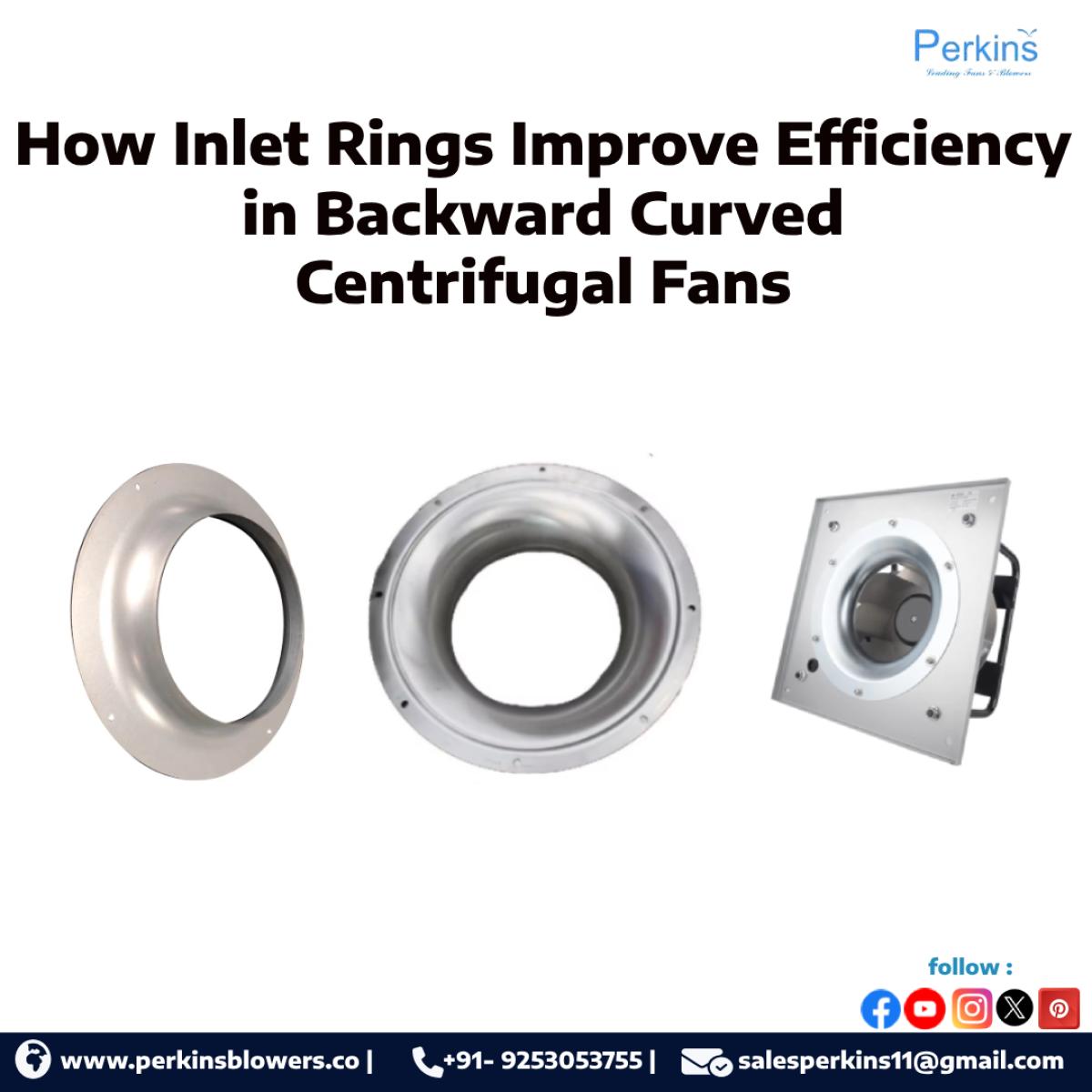
In the industrial world of air movement and ventilation, centrifugal fans are a common and highly efficient solution. Among them, backward curved centrifugal fans are known for their energy efficiency, stable performance, and low noise operation. However, one of the key components that often goes unnoticed in their performance is the inlet ring. The inlet ring plays a critical role in the overall efficiency and performance of the fan.
In this blog, we’ll explore why backward curved centrifugal fans require an inlet ring, how it impacts performance, and why manufacturers like Perkins Blowers, a leading centrifugal blowers manufacturer in India, pay special attention to its design.
Understanding Backward Curved Centrifugal Fans
Before diving into the role of an inlet ring, it’s important to understand the structure and functionality of a backward curved centrifugal fan.
These fans have blades that curve opposite to the direction of the wheel’s rotation. This curvature makes them particularly efficient at handling medium to high-pressure air applications. They are self-limiting in power consumption, which makes them safer and more energy-efficient. Their design is suitable for clean air applications in HVAC systems, industrial ventilation, and dust collection systems.
What Is an Inlet Ring?
An inlet ring, also known as an inlet cone, is a component mounted at the suction side of the centrifugal fan. It guides the incoming air smoothly into the impeller with minimal turbulence. The shape of the inlet ring is aerodynamically optimized to align the airflow with the fan’s rotation, reducing energy losses.
Read more: Understanding the Working Principle of Centrifugal Fans
Why Do Backward Curved Fans Require an Inlet Ring?
1. Reduces Turbulence at the Fan Inlet
Without an inlet ring, air enters the impeller unevenly, causing turbulence. Turbulence not only reduces the efficiency of the fan but also leads to vibration and increased wear and tear. The inlet ring ensures a smoother transition of air into the rotating blades, minimizing turbulence.
2. Improves Static Efficiency
Backward curved fans are widely used because of their high static efficiency. However, this efficiency can drop significantly if the airflow into the impeller is not properly managed. The inlet ring helps maintain a streamlined airflow, contributing to the higher static efficiency that makes these fans popular in industrial applications.
3. Reduces Energy Consumption
Energy efficiency is a key requirement in industries today. An improperly designed air inlet can result in power losses and increased operational costs. An inlet ring helps to reduce air losses and resistance, thereby lowering the power required to operate the fan.
4. Minimizes Noise Levels
Backward curved fans are often preferred because of their quieter operation. An inlet ring helps reduce aerodynamic noise by guiding air smoothly into the impeller, preventing sharp pressure fluctuations that contribute to noise. For industries that require low-noise environments, this is a critical advantage.
5. Improves System Balance and Longevity
An uneven air distribution into the fan can cause imbalance in the impeller, leading to vibration and mechanical wear. Over time, this could lead to early failure of components. The inlet ring helps maintain balanced airflow, ensuring longer life for the fan and reducing maintenance costs.
Applications Where Inlet Rings Make a Difference
Industries using backward curved centrifugal fans in their systems—such as dust collectors, HVAC units, air pollution control systems, and clean room ventilation—can benefit greatly from inlet rings. Whether it’s improving indoor air quality or managing airborne contaminants, inlet rings optimize the fan’s performance, making the entire air handling system more reliable and cost-effective.
Why Choose Perkins Blowers?
As a trusted centrifugal blowers manufacturer in India, Perkins Blowers understands the importance of each component in a fan system. Our backward curved centrifugal fans are engineered with precision inlet rings to deliver maximum airflow performance, energy efficiency, and durability. We combine advanced aerodynamic design with robust manufacturing practices to ensure every product meets global standards.
Our products serve a wide array of industries—from pharmaceuticals and chemical processing to textiles, mining, and food processing—where performance and reliability are non-negotiable.
Conclusion
The inlet ring might seem like a small component, but its impact on the performance of backward curved centrifugal fans is significant. From reducing turbulence and noise to increasing efficiency and extending equipment life, the inlet ring is essential for optimal fan operation.
When selecting high-performance fans, choosing a reliable centrifugal blowers manufacturer in India like Perkins Blowers ensures not just quality equipment, but also expert engineering that considers all the critical design elements—including the often-overlooked inlet ring.
For customized solutions and expert guidance on centrifugal fan systems, contact Perkins Blowers today.
